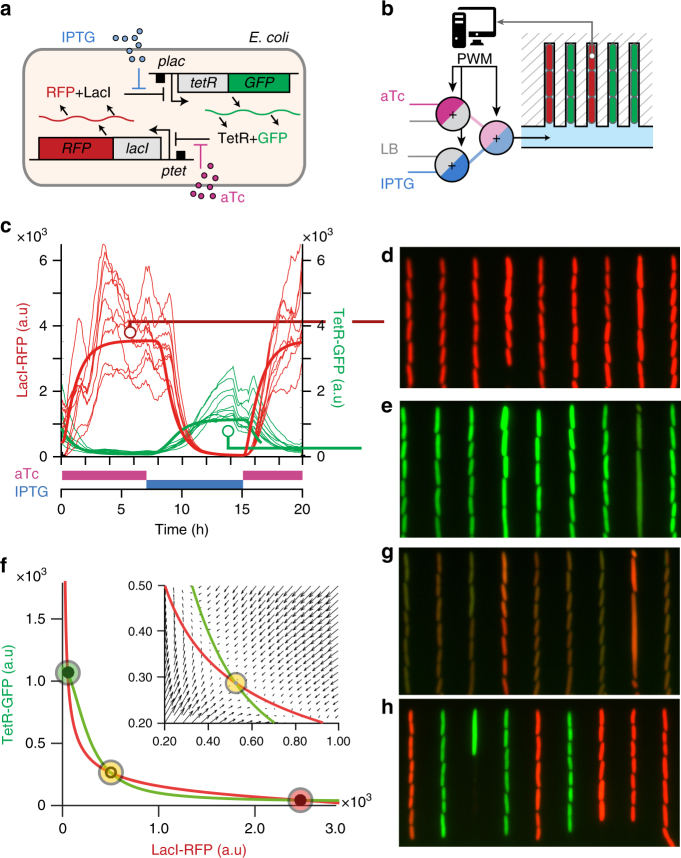Fig. 1.
Construction and characterization of a genetic toggle switch that displays bistable behavior. a The genetic toggle switch is composed of two mutually repressing branches, the strength of each can be tuned by addition of two chemicals (aTc or IPTG) to the cellular environment. The levels of the two repressors (LacI and TetR) can be observed using two fluorescent reporters (mKate2 and mEGFP). b E. coli cells are forced to grow in parallel lines in a microfluidic device to facilitate cell segmentation and tracking. Three valves used in pulse-width-modulation (PWM) allow the modulation of the concentrations of aTc and IPTG in real-time (Supplementary Fig. 2). c To calibrate a model of the toggle switch (see “Methods” section), the single-cell responses of red (LacI) and green (TetR) fluorescence were measured as a function of step changes in aTc and IPTG concentrations (n=9, see also Supplementary Fig. 3). Model outputs for averaged LacI and TetR levels are represented by the thick red and green lines. As expected for a toggle switch circuit, in presence of excess aTc, all cells are in a red-dominant (LacI) state (d), while all cells switch to a green-dominant (TetR) state in the presence of excess IPTG (e). f LacI (red) and TetR (green) nullclines of the fitted model under reference conditions (aTc = 20 ng ml−1; IPTG = 0.25 mM). The state space presents two stable equilibrium points (red and green circles) and one unstable equilibrium point (yellow circle). The inset shows the vector field close to the unstable point. Stability analysis of the model indicated that for a large region of the state space, in which protein levels are comparable, no static combinations of aTc and IPTG concentrations could be used to maintain a cell in that region (see Supplementary Fig. 6). Experimentally, while cells transiently expressing both green and red fluorescence could be observed g, the cells eventually committed to one of the two stable states h as expected for a bistable toggle switch, illustrating that dynamic control is required to maintain cells away from their two stable attractors

